
Monitoring the Dynamics of Freezing in Trees
Blog, Plant Physiology, Plant Physiology: On The Inside, Research, Research Blog0 Comments
/
Ice formation within plants influences their physiology mechanically, hydraulically, and at a cellular level. Mechanical strain occurs as water expands during freezing and tension is induced in the remaining liquid-phase sap. Xylem cavitation is initiated upon freezing due to the low (i.e. negative)…
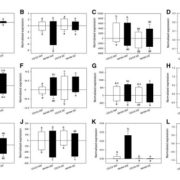
Drought-Responsive Novel MicroRNAs in Grapevine
Blog, Plant Physiology, Plant Physiology: On The Inside, Research, Research BlogEuropean grapevines (Vitis vinifera) are routinely grafted on interspecific hybrid rootstocks mainly to control infestation by phylloxera (Daktulosphaira vitifoliae). Research has shown, however, that these rootstocks can also affect scion growth vigor and resistance to abiotic stresses such as drought.…
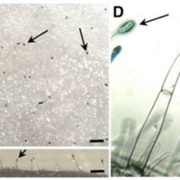
Unusual Rubisco Subunit Found in Trichomes
Plant Physiology, Plant Physiology: On The Inside, ResearchRubisco is responsible for CO2 fixation during photosynthesis. This enzyme is assembled from eight large subunits (RbcL), encoded by a single chloroplast gene, and eight small subunits (RbcS), encoded by a nuclear gene family. Although Rubisco’s catalytic reaction is mostly controlled by the large…

Genome-Wide Analysis of Temperature-Induced Fatty Acid Desaturation
Plant Physiology, Plant Physiology: On The Inside, ResearchBiogeographic studies suggest that the degree of fatty acid unsaturation in oilseeds has played a major role in adapting plants to temperature. The enzymes that are primarily responsible for producing polyunsaturated fatty acids in seed oils are the microsomal ω-6 and ω-3 fatty acid desaturases FAD2…
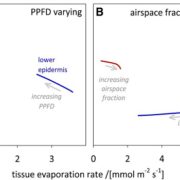
Sites of Water Evaporation from within Leaves
Plant Physiology, Plant Physiology: On The Inside, ResearchCurrent available evidence suggests that the location of the sites of evaporation is important for many questions across plant physiology, including patterns of leaf isotopic enrichment, maintenance of mesophyll water status, stomatal regulation, and interpretation of measured stomatal and leaf hydraulic…

Insights into Calmodulin-Interacting Proteins
Plant Physiology, Plant Physiology: On The Inside, ResearchCalmodulin (CaM) and closely related CaM-like polypeptides are principal sensors of Ca2+ signals. The plant-specific IQ67 DOMAIN (IQD) family has emerged as possibly the largest class of CaM-interacting proteins with undefined molecular functions and biological roles. Bürstenbinder et al. (Plant Physiol.…
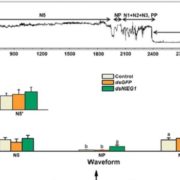
A Salivary Effector Aids in Brown Planthopper Feeding on Rice Plants
Plant Physiology, Plant Physiology: On The Inside, ResearchHerbivory-induced plant cell wall modifications play an important role in deterring herbivory. Modified cell walls not only act as physical defenses against herbivores by enhancing the mechanical hardness of plant tissues but also reduce the digestibility of food for herbivores, thereby functioning as…
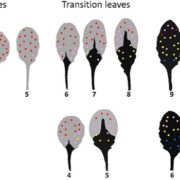
Heteroblastic Development of Transfer Cells: A Role for MicroRNA
Plant Physiology, Plant Physiology: On The Inside, ResearchTransfer cells (TCs) play critical roles in membrane transport of solutes at various sites within plants and between plants and their environment. This transport capacity is conferred by inward wall protuberances that extend into the cell lumen. These ingrowths function to enhance the area of surrounding…

Toward Designing Tulips for a Warmer World
Blog, Plant Physiology, Plant Physiology: On The Inside, ResearchMost cultivated tulips (Tulipa gesneriana) are produced in The Netherlands, which has a temperate climate resembling the Central Asian climate in which they originated. The growth cycle of cultivated tulips starts in autumn, when the bulbs are planted in the field. At that time, all organs, including…

